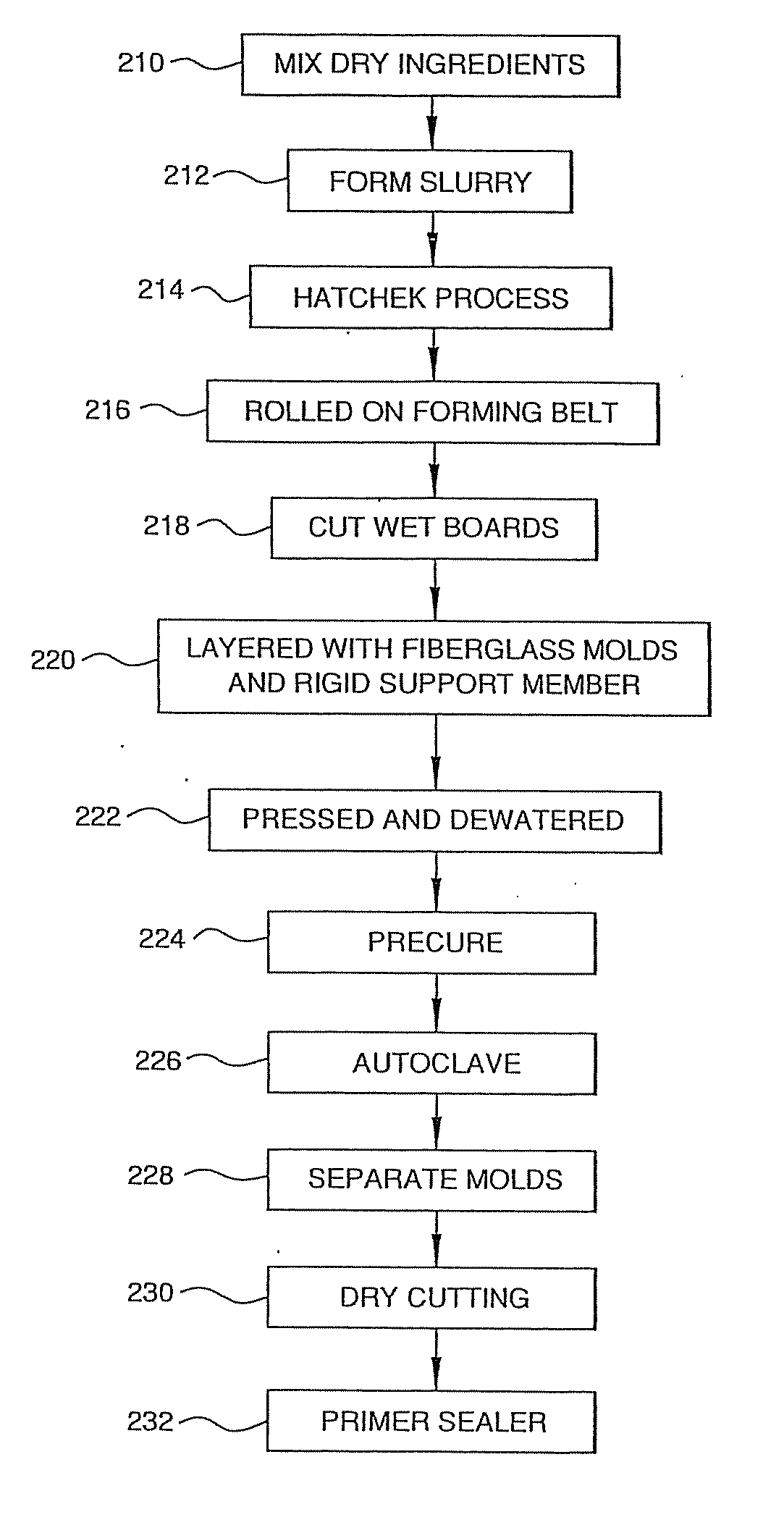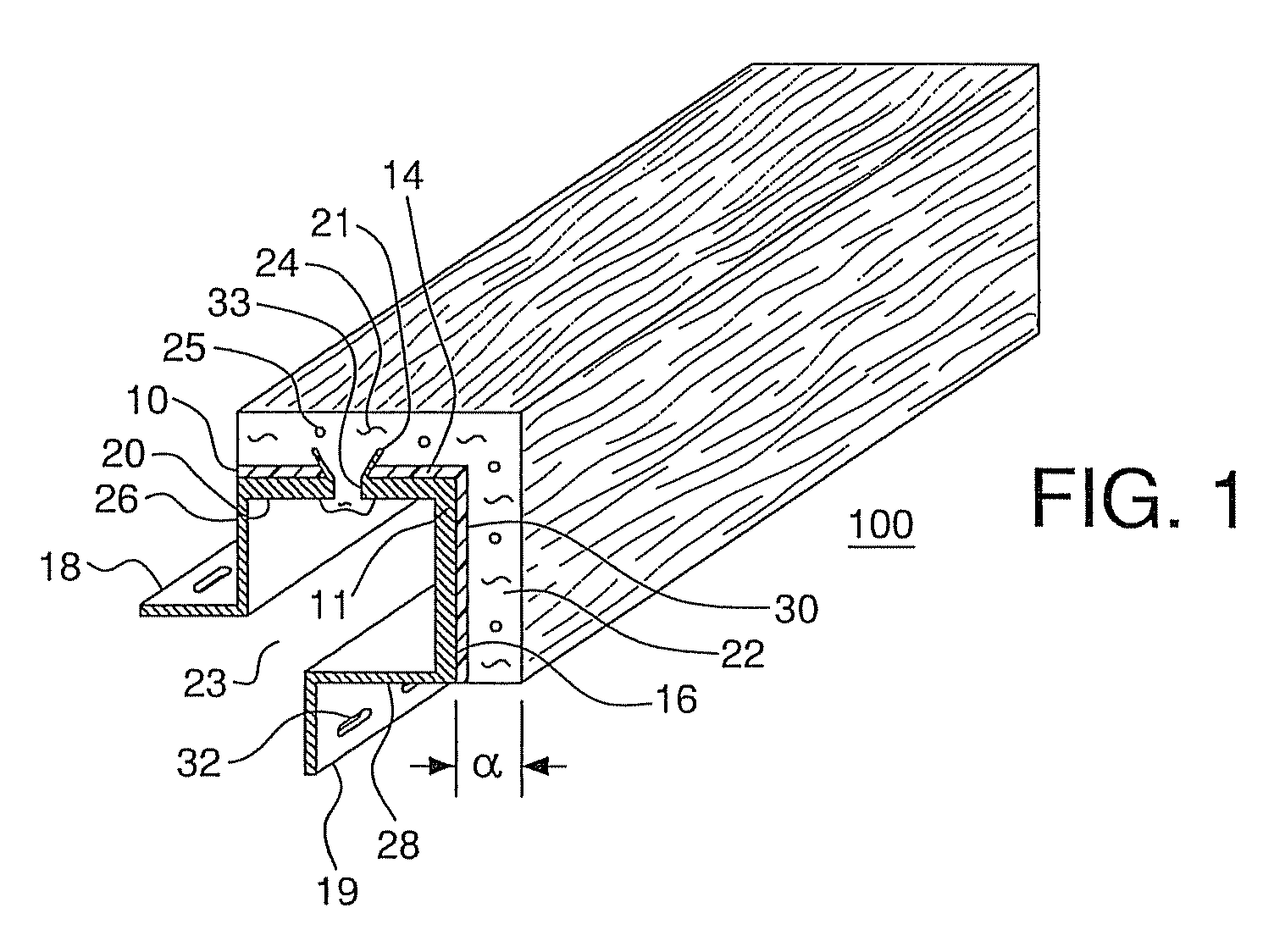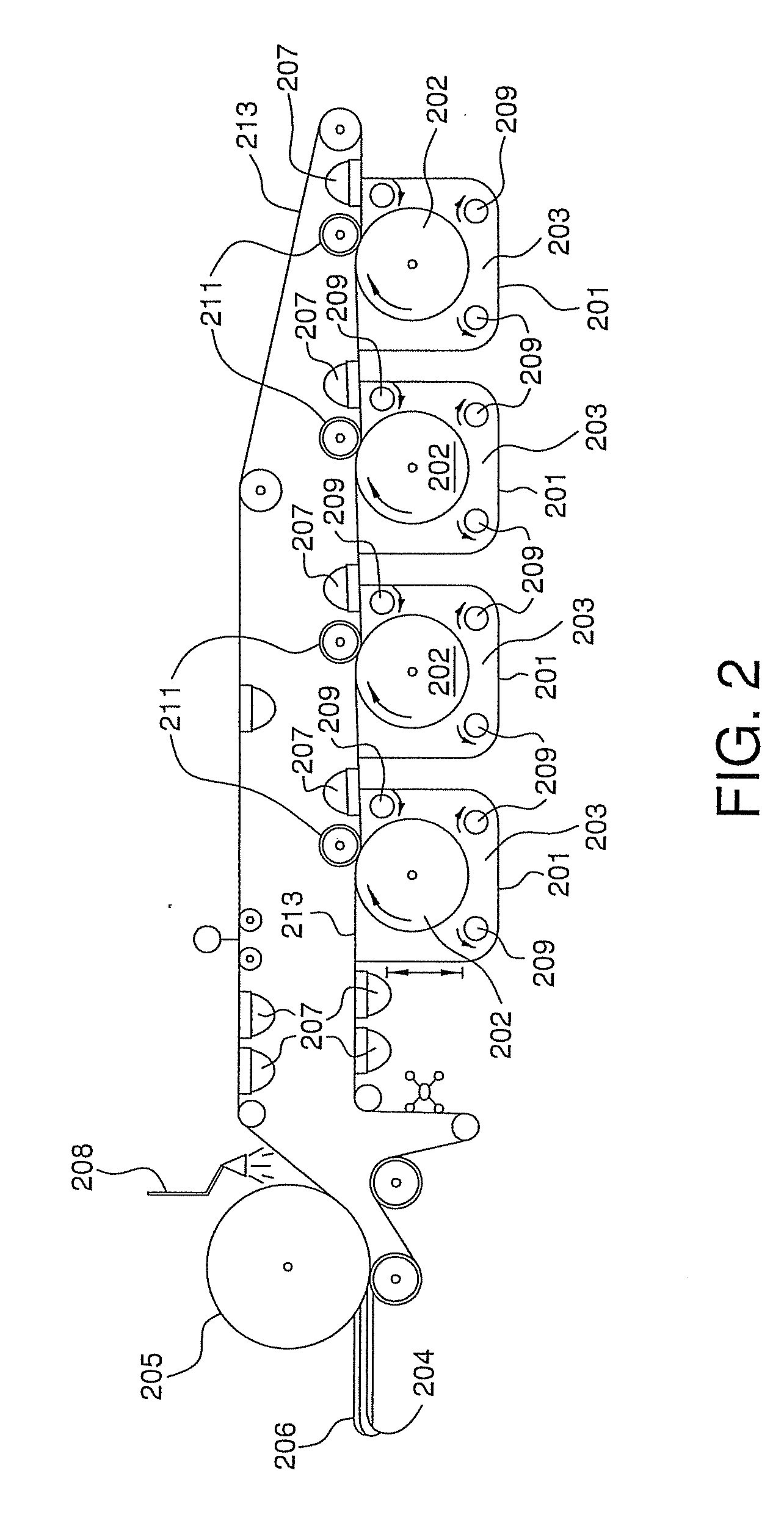Cementitious Exterior Sheathing Product Having Improved Interlaminar Bond Strength
a technology of interlaminar bonding and exterior sheathing, which is applied in the direction of water-setting substance layered products, solid waste management, flooring, etc., can solve the problems of severe deterioration of fibercement building products, unsuitable exterior use, cracking, etc., to improve strength, increase interlaminar bonding strength, and improve ilb strength
- Summary
- Abstract
- Description
- Claims
- Application Information
AI Technical Summary
Benefits of technology
Problems solved by technology
Method used
Image
Examples
working example i
[0044] Specimens for water absorption and mechanical testing were prepared by a Hatchek process diagrammatically provided in FIGS. 2 and 3 using the following formulation:
[0045] Ingredients
[0046] cellulose fiber 8 wt. %
[0047] cement (Portland type I-II) 36 wt. %
[0048] silica sand (greater than 97% quartz) 52 wt. %
[0049] clay (56% SiO2, 28% alumina) 4 wt. %
[0050] mixed polymer concentration (Rhoplex(M E330 latex) 0.6 wt %
[0051] These ingredients were added with water (77% by weight of water and the above ingredients). The Rhoplex® E-330 latex water emulsion, which is hydrophilic, can be applied (as will be described below) in an amount of about 0.1-5.0 wt %, more preferably, 0.2-0.8 wt %, based on the weight of the starting ingredients. A small amount of defoamer was also employed using a flow rate of about 2.2 g / hour.
[0052] The Rhoplex acrylic emulsion was applied using a plurality of spray nozzles. A spray rate of 1.5 g / m per nozzle at 40 psi was used. Each nozzle had a 80 ...
working example ii
[0056] The same Hatchek process used for Working Example I was employed again to make a series of boards to develop the optimum loading ratio of Rhoplex E-330 to water. Using the same spray parameters, a pink trial (ratio of 1 part E-330:0 part water), gray trial (1:2), green trial (1:10), and blue trial (1:20), were performed. Attached below are the strength vs. concentration ratio measurements for the control and test samples which were cut from the same board in each ratio grouping.
TABLE 2Strength vs. Concentration Ratio1E-330:0 WaterSample09837 Pink Trial09837 Pink Control% IncreaseTest 11.060.59Test 20.610.89Average0.840.7412.84%*Std. Dev.0.320.211E-330:2 WaterSample09837 Green Trial09837 Green Control% IncreaseTest 10.840.45Test 20.650.57Average0.750.5146.08%Std. Dev.0.130.081E-330:10 WaterSample09837 Blue Trial09837 Blue Control% IncreaseTest 10.510.38Test 20.280.51Average0.400.45−11.24%*Std. Dev.0.160.091E-330:20 WaterSample09837 Gray Trial09837 Gray Control% IncreaseTest ...
PUM
| Property | Measurement | Unit |
|---|---|---|
| pressures | aaaaa | aaaaa |
| elongation | aaaaa | aaaaa |
| elongation | aaaaa | aaaaa |
Abstract
Description
Claims
Application Information
 Login to View More
Login to View More - R&D
- Intellectual Property
- Life Sciences
- Materials
- Tech Scout
- Unparalleled Data Quality
- Higher Quality Content
- 60% Fewer Hallucinations
Browse by: Latest US Patents, China's latest patents, Technical Efficacy Thesaurus, Application Domain, Technology Topic, Popular Technical Reports.
© 2025 PatSnap. All rights reserved.Legal|Privacy policy|Modern Slavery Act Transparency Statement|Sitemap|About US| Contact US: help@patsnap.com



